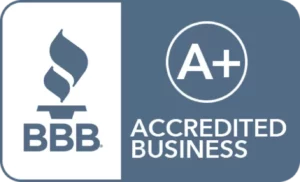Many people know that IRA or 401(k) plan contributions can be made pretax or Roth. However, many retirement savers mistakenly think that a non-deductible or after-tax contribution is the same as a Roth contribution. It is not. With a Roth Solo 401(k) plan contribution, once the plan participant is over the age of 59 1/2 and the Roth has been opened at least five years, all Roth 401(k) distributions will be tax-free. Another option is the mega Roth strategy.
Whereas, in the case of an after-tax or non-deductible 401(k) contribution, the amount of the contribution can be taken as a tax-free distribution anytime, however, all earnings generated by the contributions are subject to tax, much like a pretax 401(k) contribution.
What is Mega Roth Strategy for 401(k) Plans?
The advantage of making after-tax contributions and employing the “Mega Roth” strategy versus a typical mix of employee deferral and profit sharing contribution is that you can:
- Make a dollar for dollar contribution up to $66,000 or $73,500 for 2023 versus an employee deferral up to $22,500 or $30,000 if age 50+.
- Make a profit sharing contribution, which is based off a percentage of your compensation (20% or 25%).
Unfortunately, not all Solo 401(k) plans allow for nondeductible contributions, but IRA Financial Group’s 401(k) plan documents do.
After-tax 401(k) plan contributions are not a new phenomenon, but new IRS regulations (Notice 2014-54) make after-tax contributions more attractive in a few ways. The new IRS regulations allow the retiree to effectively segregate the after-tax assets from the pretax funds.
The pretax funds can be rolled into a Traditional IRA, whereas the after-tax dollars can be converted into a Roth IRA. Prior to Notice 2014-54, there was a question as to whether after-tax funds can be converted to a Roth IRA.
Can After-Tax Funds be Converted to a Roth IRA?
Notice 2014-54 clarified this rule and allows the pretax and after-tax funds that were distributed from a plan on a pro-rated basis to be separated once a distribution is made.
For example, if a self-employed sole proprietor under the age of 50 made $50,000 in 2021, elected to use the “mega Roth” strategy, she would be able to defer most of the $50,000 she earned. In contrast, if her plan did not include the ability to make after-tax 401(k) contributions, she would only be able to contribute $22,500 plus 20% of her salary, allowing her to defer approximately $29,500 for the year, versus close to $50,000 using the “Mega Roth” strategy.
One of the nice things about after-tax contributions is that it can really help boost a plan participant’s annual plan contribution amount and allow for automatic in-plan rollovers to an IRA or another 401(k) plan.
IRS Reporting of After-Tax Conversion to Roth
IRS Form 1099-R
Based on IRS Notice 2014-54, the plan participant can now segregate and convert the amount of the after-tax contributions to Roth. Assuming no earnings were generated from the after-tax contributions, the Roth conversion would not be subject to tax.
When it comes to reporting Roth 401(k) plan conversions, one must complete an IRS Form 1099-R the following year by January 31. Reporting an after-tax conversion to Roth is quite simple. The key points to remember when completing the form is the Box 2A – Taxable Amount should be $0 and code “G” should be used in Box 7. This is important because an after-tax Roth conversion should not be treated as a taxable distribution.
To learn more about the advantages of employing the Mega Roth Solo 401(k) plan strategy, please contact one of our 401(k) specialists at 800-472-1043.











